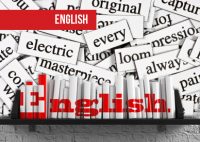Comprehension For SBI PO set – 9

Comprehension set – 9
Since July 1991, the government of India has effectively put the liberalization policy into proactive. The drastic steps even include some administrative reforms for pruning the government agencies. Last year the Japanese business circles represented by the Ishikawa Mission called attention of their Indian counterparts to what they considered to be the major impediments in India. However, thanks to the almost revolutionary reforms put into effect by the Indian government, those impediments either have been removed or now are on their way out. This development gives a new hope for the future of economic co-operation between the two countries. At the same time, it should be borne in mind that there is a stiff competition with other countries, notably China and South-East Asian countries, in this regard. The success stories of ASEAN countries welcoming Japanese investments with adequate infrastructure are already known in India but it may be useful if further studies of Japanese joint ventures in ASEAN countries be made by Indian business circles. The coastal areas of China have initiated a very active campaign to welcome foreign economic participation. Beyond our bilateral relationship, India’s more active participation in global economy is needed. India certainly deserves a far bigger share of world trade considering its vast resources. It is strongly hoped that the Indian government’s recently initiated effort of enlarging its export mart would bear fruit. India has steadfastly maintained its parliamentary democracy since independence. Considering its size, its population and its internal complexity, the overall maintenance of national integrity and political stability under parliamentary democracy is remarkable and admirable indeed. Here lies the base for the status of India in the world. By effectively implementing its economic reform with the support of public opinion, this democratic polity of India has again demonstrated its viability and resilience. At the same time, it gives hope and inspiration to the whole world which faces the difficult problem of North-South confrontation.
1. The Ishikawa Mission during its visit to India emphasized on
(a) future economic co-operation between Japan and India.
(b) need for removing policy and/or implementation hurdles.
(c) need for a stiff competition.
(d) striking down revolutionary reforms.
(e) None of these
2. How did the Indian government react to the hurdles in the way of bilateral trade between India and Japan?
(a) The government, in principle, agreed for removal of these hurdles.
(b) Bureaucracy succeeded in maintaining a status quo.
(c) Government thought it was against liberalization policy.
(d) The Japanese delegation could not forcefully argue their case.
(e) It failed to remove these hurdles.
3. What is the result of Japanese investments in ASEAN nations?
(a) It could not gather momentum for want of infrastructure.
(b) The experiment failed because of stiff competition from other countries.
(c) China and South-East Asian countries objected to Japanese investments.
(d) The passage does not provide complete information.
(e) None of these
4. Which of the following is TRUE about the author’s view regarding India’s participation in world trade?
(a) India should actively contribute in a big way as it had tremendous resources.
(b) India’s sharing in global economy has already been very fast and beyond its resources.
(c) India should refrain from making efforts in enlarging its export market.
(d) India needs to first strengthen its democracy.
(e) None of these
5. On India’s implementing liberalization policy, the author seems to be
(a) unreasonably critical.
(b) sarcastic.
(c) appreciative.
(d) unconvinced about its effectiveness.
(e) None of these
6. It can be inferred from the content of the passage that the author is a/an
(a) political analyser
(b) Japanese bureaucrat
(c) economist
(d) Japanese politician
(e) Indian Prime Minister
7. The author seems to appreciate India’s national integrity and political stability particularly in view of which of the following?
(A) the size of the country
(B) India’s population
(C) its internal complexity
(a) None of the three
(b) All the three
(c) A and B only (d) B and C only
(e) A and C only
8. The author feels that India has a better status in the world market because of its
(a) success in political stability and national integration in democratic set-up.
(b) vast population.
(c) giant size.
(d) effective bilateral relationship with other countries.
(e) foreign economic participation.
9. Which of the following statements is TRUE in the context of the passage?
(A) India’s successful experiment of economic reform has become an inspiration to the world.
(B) size, population and internal complexity of our country area the barriers in the way of attaining national integrity and political stability.
(C) A few government agencies were not in favour of liberalization policy at the beginning.
(a) A only (b) B only
(c) C only (d) All the three
(e) None of these
Directions (Q. 10-12): Choose the word which is most SAME in meaning as the word printed in bold as used in the passage.
10. STEADFASTLY
(a) quickly
(b) violently
(c) adversely
(d) religiously
(e) faithfully
11. RESILIENCE
(a) quietening
(b) amplifying
(c) existence
(d) adaptability
(e) rejuvenation
12. PRUNING
(a) activating
(b) trimming
(c) punishing
(d) encouraging
(e) empowering
Directions (Q. 13-15): Choose the word which is most OPPOSITE in meaning of the word printed in bold as used in the passage.
13. STIFF
(a) stubborn
(b) indelible
(c) tense
(d) yielding
(e) soapy
14. VAST
(a) minute
(b) meagre
(c) minor
(d) innumerable
(e) intangible
15. IMPEDIMENTS
(a) exaggeration
(b) compendium
(c) obstacle
(d) aggravation
(e) furtherance
Answer key:
1. (b) 2. (a) 3. (d) 4. (a) 5. (c) 6. (c) 7. (b) 8. (a) 9. (a) 10. (e) 11. (d) 12. (b) 13. (d) 14. (b) 15. (e)


